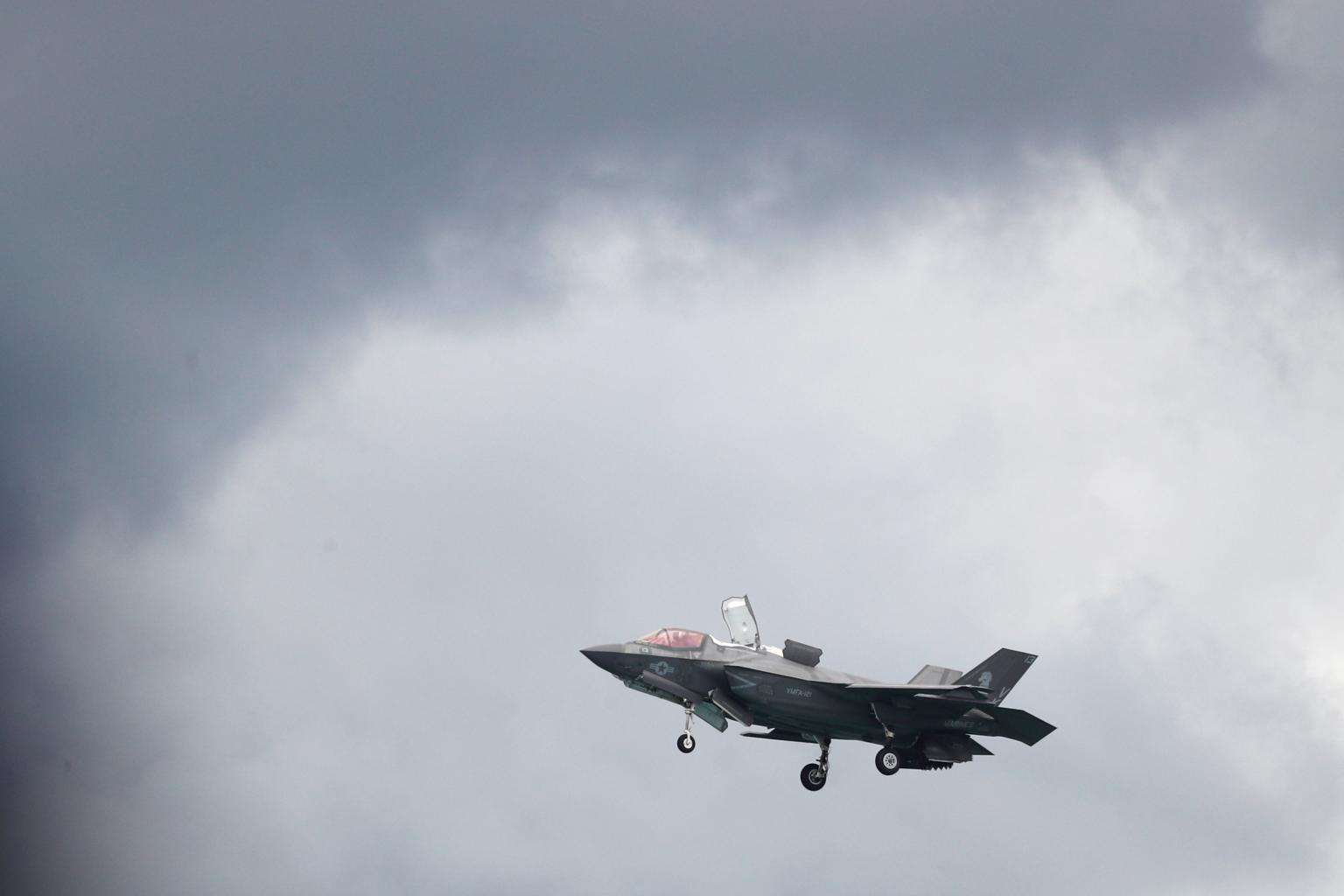RSAF's first 4 F-35s will undergo initial training and evaluation in the US: Chief of Air Force
Sign up now: Get ST's newsletters delivered to your inbox

A US F-35B Joint Strike Fighter at the Singapore Airshow on Feb 11, 2020.
PHOTO: REUTERS
Follow topic:
SINGAPORE - Singapore's first four next-generation fighter jets, the F-35 Joint Strike Fighter, will conduct their initial training and evaluation in the United States, said Chief of Air Force, Major-General Kelvin Khong on Friday (Feb 14).
The evaluation would not just be on the performance of the aircraft, but also on how it can be integrated into the Republic of Singapore Air Force's (RSAF's) warfighting systems, he added.
"We believe it is not sufficient for the platform itself to be capable. It needs to be integrated into the RSAF system so that the effects of its combat power can be multiplied," he said in an email interview with local and foreign media.
In the wide-ranging interview that was tied to the Singapore Airshow, which began on Tuesday (Feb 11), MG Khong acknowledged there were concerns over the F-35s, which included design deficiencies and cost overruns.
"We are convinced that the F-35 programme has matured to a stage where confidence in the eventual delivery of a cost effective 5th generation fighter is high," he said, adding that most of the issues had been resolved in recent years.
The US government last month gave the green light for the sale of up to a dozen of the stealth fighters and related equipment to Singapore for US$2.75 billion (S$3.7 billion), although Singapore's purchase must still be approved by Congress.
MG Khong said that it was inevitable in any development of this complexity that there would be challenges. "And although some work still needs to be done on issues like the logistics sustainment for the aircraft, most of the other issues had already been resolved."
He noted that the price of the aircraft has been falling steadily due to "healthy orders" from the US and other countries like the UK and Australia, and the cost of one F-35 today has dropped by more than 40 per cent since 2010.
He estimated that the total cost of acquiring and operating an F-35B, a pricier variant of the F-35 with short take-off and vertical landing capabilities which Singapore has requested for, over the lifespan of the aircraft is comparable to that of an F-15SG.
Giving an update into the RSAF's other hardware upgrades, he said that the F-16 upgrade programme which started in 2016 is on track, and the first upgraded F-16 aircraft should be rolled out around 2021.
The H225M and CH-47F helicopters will replace the Super Puma and older CH-47D Chinook that have been in service since 1983 and 1994 respectively. Delivery is expected towards the later part of the year, he said.
On the recent agreement with the US to set up a new fighter training detachment in Guam signed last December (2019), MG Khong said its "sole purpose" was to meet the air force's training needs.
"Like our other overseas detachments, Guam gives us access to larger training areas that will help us mitigate airspace constraints in Singapore. We will be able to conduct bigger scale and more complex training under realistic conditions to hone our operational capabilities."
He added that discussions with the US were ongoing, with the detachment scheduled to be established by the end of the decade.
Giving his first interview since he was appointed as air force chief in March last year, MG Khong also spoke about how the security landscape had become more complex in recent years, along with the challenge of protecting Singapore's skies.
In the last 10 years, air traffic around Singapore has grown by about 59 per cent, with an average of more than 1,000 flights in and out of Singapore every day.
"Our air defence operators need to be vigilant to monitor the air traffic around Singapore and spot any abnormal behaviour. When there are threats, they need to respond to make sure these are swiftly dealt with," said MG Khong, a trained fighter pilot who has flown the F-16 and F-15SG.
Drones were another threat that has emerged over the last few years, he said.
This is not just from small, commercial drones such as those that were involved in Gatwick Airport in Dec 2018 or those that disrupted Changi Airport in June last year.
"Larger, military-grade weaponised drones are perhaps less easy to acquire and operate, but can wreak far greater damage, and so continue to present a serious threat that we must be prepared to guard against," he said.
"We have built up capabilities to prevent such drones from attacking Singapore, but we will need to continue to enhance these capabilities as the drone threat continues to evolve."
Responding to a question about manpower challenges, MG Khong stressed that members of the RSAF areits greatest asset.
As cohorts of Singaporeans entering the workforce continue to shrink, the air force has already started investing in systems that are more capable and manpower efficient, he said.
He cited the Spyder missile system which only needed four men to deploy, its while its predecessor, the Rapier system, needed 15.
"We have a highly skilled and educated people, and they are dedicated to the mission of defending our nation's skies. We will continue to invest in developing our people and equipping them with the skills to exploit technology so they can do their jobs better."

